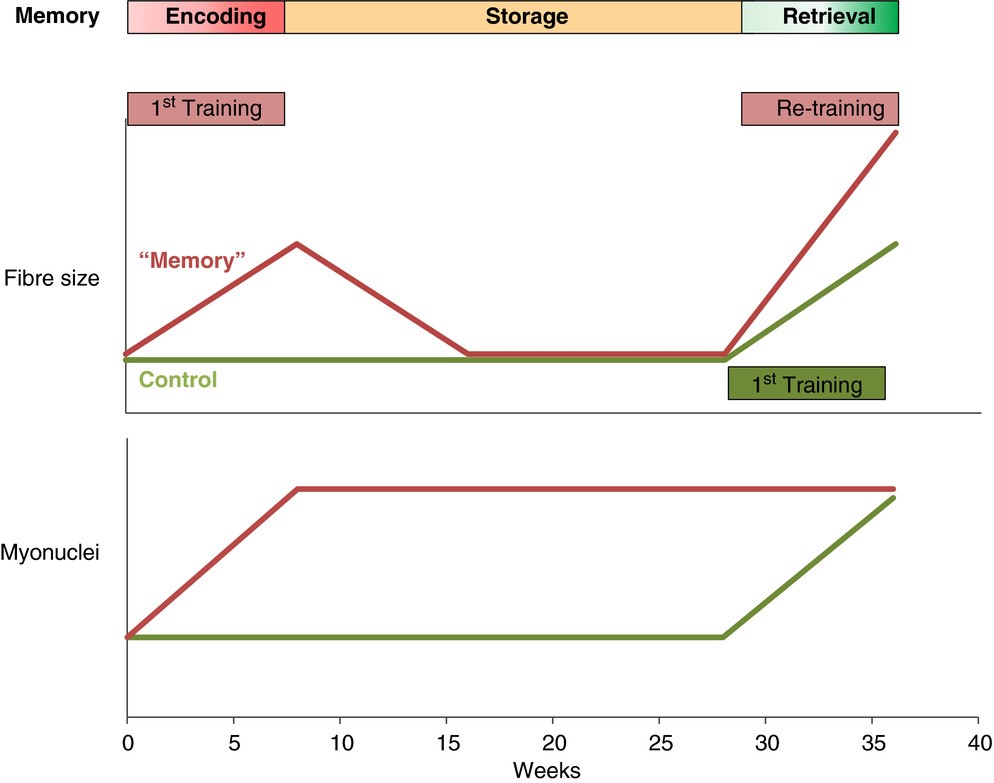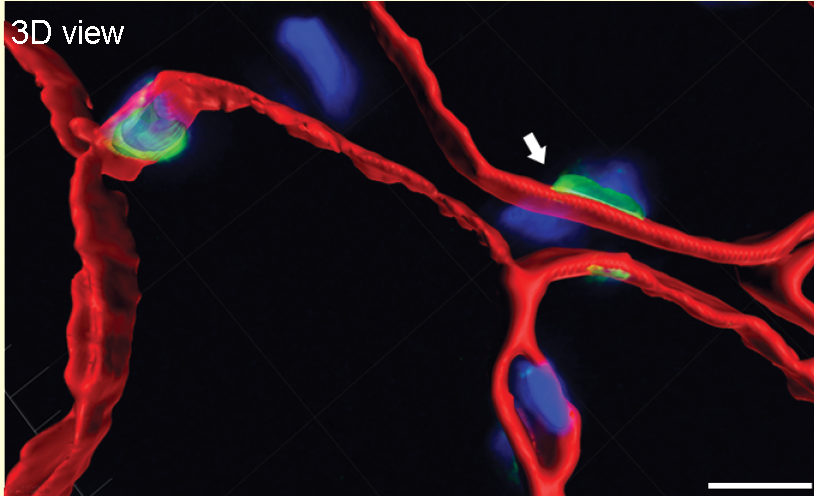The term muscle memory describes how previous stimuli such as exercise or doping enhance the effect of subsequent exercise, even a long time after the stimulus (see Figure 1). How this functional memory is stored and used is not clear, but recent evidence points towards that post-translational modifications (PTMs) of proteins play an important role.
Skeletal muscle is a remarkable cell type, it consists of long fibres with multiple nuclei, known as myonuclei. The fibres are plastic and can change size and properties in response to variation in neural signal, loading condition or hormonal signals. However, the nuclei are not lost, even after a long period of inactivity, making them a good candidate for hosting the memory.
In the project, the students are going to investigate the regulatory program behind muscle hypertrophy. Various techniques such as stem cell differentiation and genome editing of the myonuclei will be used to study the effect of specific post-translational modifications.
Aim:
Our group has 1-2 master projects available where the candidates will investigate how the muscles store and use the memory, linking physiological adaptations to alterations on the molecular level.
Methods:
In the projects, the students will gain a strong background in molecular biology and physiology. Some of the methods you will learn: mammalian cell culture with a focus on differentiation of stem cells, CRISPR genome editing, imaging, real-time qPCR and mass spec analysis of PTMs.
The projects will be performed in the laboratories of Professor Pål Falnes and Professor Kristian Gundersen at the section of Biochemistry and Molecular biology and Section of Cell Biology and Physiology, respectively, with the main focus at the Falnes laboratory. The candidates will be supervised by Dr. Einar Eftestøl and Dr. Mads Bengtsen.
If you think the project sounds interesting or have any questions, contact Mads Bengtsen (mads.bengtsen@ibv.uio.no) / Kristine Bonnevies hus room 2611.

